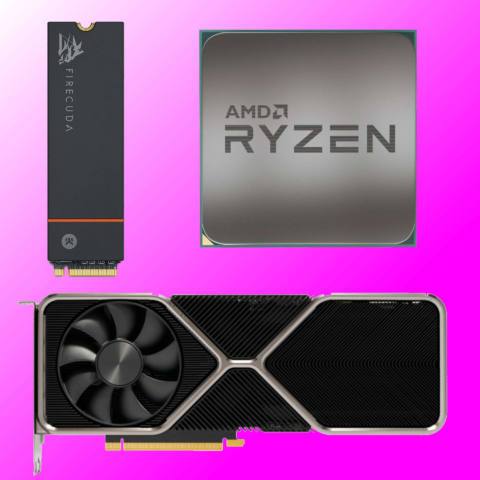This is getting a teensy bit repetitive now, but there’s yet more bad news for Intel. Its arch rival AMD has clawed back a hefty 10% market share in the desktop x86 CPU segment over the last year. And that has us wondering, could those crashing 13th and 14th Gen CPUs be hurting Intel’s sales?
The market share figures are according to the long-time PC hardware soothsayers and data analysts at Mercury Research (via Tom’s Hardware). AMD now owns 28.7% of the desktop CPU market, up from 19.2% a year ago, though its mobile CPU share is a fair bit lower at 22.3%.
This time last year, AMD owned 19.5% of the mobile CPU market. So, its share of that segment is rising, too, just not as fast.
To put all that into context, if you go back to the second half of 2016, about six months before AMD began to turn things around with the first Ryzen-branded CPUs, AMD’s desktop CPU market share was just 9.1%.
Of course, with Intel still owning over 70% of the market, reports of its comprehensive demise are clearly overstated. But bar one or two fleeting blips, AMD has since been chipping away at Intel, quarter by relentless quarter.
This most recent quarter saw AMD snag an additional 5% desktop market share from Intel, the biggest quarterly jump in at least a decade. If this carries on much long, those doom-laden narratives around Intel will be much closer to reality.
The explanations for that are somewhat speculative. But it certainly seems like it’s not a coincidence that the first quarterly figures that might have been impacted by the PR fallout from those crashing 13th and 14th Gen CPUs has indeed registered a big fall for Intel.
One caveat to all this is that Intel told Mercury Research that some of its market share loss was due to an “inventory correction” at one of its customers. it’s not totally clear what that means, but the implication is that we could see a bit of a bounce back for Intel next quarter.
If that does indeed happen, then the whole “crashing CPU craters Intel market share” narrative will be a little harder to push. Still, however you slice it, the data has only been moving in one direction. AMD is taking market share from Intel with relentless consistency for the better part of a decade.
Inventory corrections or no, it’s hard to see that trend changing, what with Intel’s new Arrow Lake CPUs proving pretty disappointing. As things stand and given Intel has only just launched an all-new desktop chip, we’re not expecting a major update from Intel in terms of desktop processors until Nova Lake in 2026. So, it’s hard to see anything but further market share losses until at least then.
That said, the mobile market is increasingly important and Intel’s Lunar Lake CPUs are much more competitive there. Arguably, they are more appealing than AMD’s chips thanks to excellent efficiency, at least for thin-and-light laptops.
The slight problem with Lunar Lake is that, according to Intel itself, Lunar Lake isn’t as profitable as the company would like. That’s thanks to two factors. First is the fact that it is mostly manufactured by Taiwanese foundry TSMC, rather than in Intel’s own fabs.
The other factor increasing costs and hitting margins is the use of integrated DDR5 memory, which is why Intel has said it won’t do that again. As it happens, Intel’s next-gen Panther Lake mobile CPU addresses both problems by using more in-house Intel silicon and ditching the integrated memory.
Panther Lake is due next year, likely ahead of AMD’s next major mobile CPU update. So, 2025 could be a better overall picture for Intel, even if it looks like it will be fighting a losing battle on the desktop for some time to come.

Best CPU for gaming: Top chips from Intel and AMD.
Best gaming motherboard: The right boards.
Best graphics card: Your perfect pixel-pusher awaits.
Best SSD for gaming: Get into the game first.






